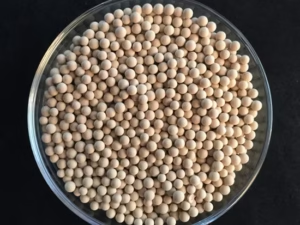Description
Unlocking Potential: Understanding and Utilizing 13X Molecular Sieves
In the realm of industrial separation, purification, and catalysis, 13X molecular sieves stand as powerful and versatile tools. These synthetic zeolites, characterized by their large pore size and strong affinity for specific molecules, are employed across a wide range of industries, from petroleum refining to air drying. This article aims to shed light on the properties, applications, and benefits of 13X molecular sieves, offering a comprehensive understanding of this essential material.
What are 13X Molecular Sieves?
Molecular sieves are crystalline aluminosilicates with a three-dimensional framework structure composed of interconnected tetrahedra of silicon and aluminum. These structures form precisely sized pores and cavities that can selectively adsorb molecules based on their size and polarity.
13X molecular sieves, specifically, are known for their exceptionally large pore size, approximately 10 angstroms (1 nanometer). This characteristic allows them to adsorb larger molecules than other types of molecular sieves, such as 3A, 4A, and 5A. The “X” in its name signifies its Faujasite (FAU) structure type.
Key Properties of 13X Molecular Sieves:
- Large Pore Size: Allows adsorption of molecules up to 10 angstroms.
- High Adsorption Capacity: Can hold a significant amount of adsorbed molecules.
- Selective Adsorption: Prefers polar molecules and those with multiple bonds.
- High Thermal Stability: Can withstand high temperatures without structural degradation.
- Regenerative: Can be regenerated through heating and/or vacuum to release adsorbed molecules for reuse.
Applications Across Industries:
The unique properties of 13X molecular sieves make them ideal for a wide range of applications, including:
- Air Drying: A primary application is the removal of moisture from air and other gases. This is crucial in industries like compressed air systems, instrument air purification, and cryogenic air separation.
- Gas Separation: They are used to separate various gases, such as oxygen from nitrogen in air separation units, and to remove CO2 from natural gas streams.
- Bulk Gas Drying: Drying of saturated hydrocarbon gases (methane, ethane, propane, etc.) and cryogenic liquids.
- Petroleum Refining: They play a vital role in removing sulfur compounds (H2S, mercaptans) and CO2 from hydrocarbon streams, ensuring the production of cleaner fuels.
- PSA (Pressure Swing Adsorption): Used in PSA systems for the separation and purification of various gases, including hydrogen, oxygen, and nitrogen.
- Catalysis: The large pore size allows them to function as support materials for catalysts, facilitating chemical reactions within the pores.
- Medical Oxygen Concentrators: Used in portable oxygen concentrators to separate nitrogen from air, providing a concentrated source of oxygen for patients with respiratory problems.
- Refrigerant Drying: They are used to remove moisture from refrigerants, preventing corrosion and maintaining the efficiency of refrigeration systems.
Advantages of Using 13X Molecular Sieves:
- High Efficiency: Their selective adsorption and high capacity allow for efficient separation and purification.
- Cost-Effectiveness: Regeneration capabilities and longevity contribute to reduced operational costs.
- Environmental Benefits: By removing pollutants and impurities, they help produce cleaner products and reduce emissions.
- Reliability: Their stability and consistent performance ensure reliable operation in demanding industrial environments.
Regeneration and Maintenance:
To maintain the effectiveness of 13X molecular sieves, proper regeneration is crucial. This involves heating the material under a flow of dry gas or applying vacuum to remove adsorbed molecules. The specific regeneration conditions depend on the type of adsorbed molecules and the desired level of purity.
Regular monitoring of the molecular sieve’s performance is also essential to ensure optimal performance and prevent fouling or degradation.
Conclusion:
13X molecular sieves are indispensable materials in a wide range of industrial processes. Their unique properties, including large pore size, high adsorption capacity, and regenerability, make them ideal for various separation, purification, and catalytic applications. By understanding the principles behind their operation and implementing proper maintenance practices, industries can leverage the full potential of 13X molecular sieves to improve efficiency, reduce costs, and contribute to a more sustainable future. As technology advances, we can expect further innovations in the application of 13X molecular sieves, solidifying their role as a crucial component in numerous industrial operations.











Reviews
There are no reviews yet.